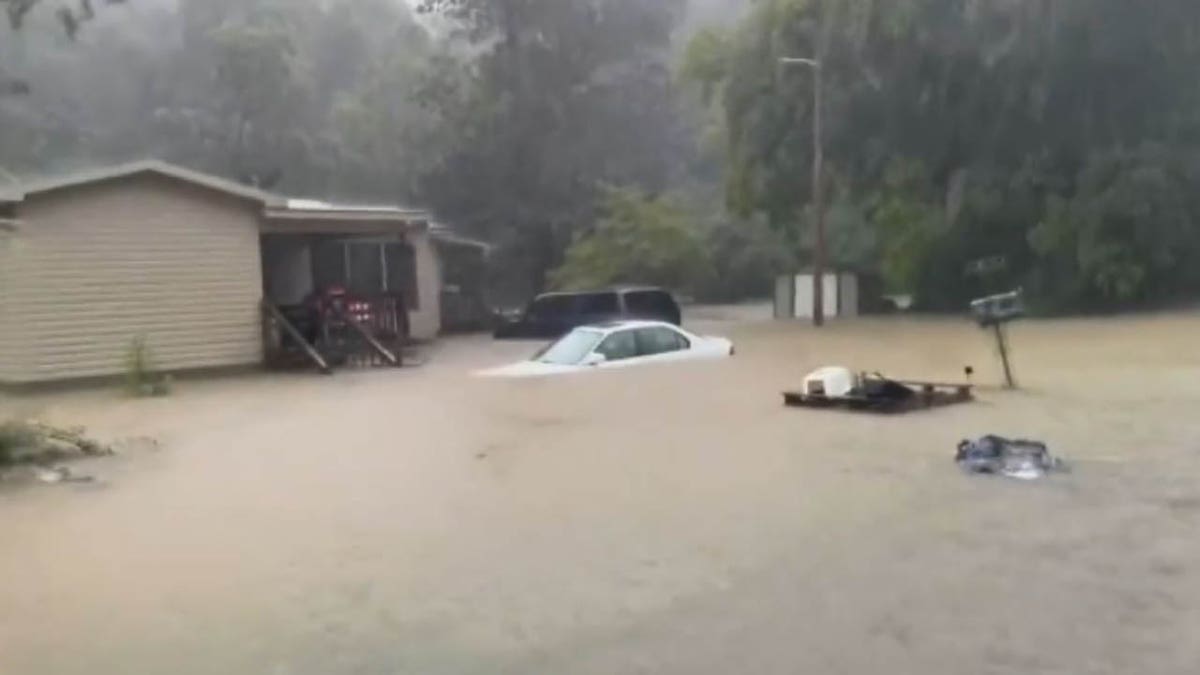California storms: Car smashed by fallen tree in Sacramento
A video has captured a car destroyed by a tree that fell during high winds in Sacramento, California. (Credit: @Robb7478/SPECTEE/TMX)
When severe rain storms are in the forecast, it is always advisable to stay off the roads.
Flooding can happen quickly on streets and highways, leaving you stranded, or worse.
Even after they have passed, roads can remain inundated for days, and the National Weather Service's "Turn Around Don't Drown" campaign advises motorists never to drive through deep water.
It can cause your vehicle's engine or electrical system to fail, stranding you, and as little as a foot of flowing water can carry it away into deeper, more dangerous areas, or slam the vehicle into an obstacle.
BEWARE OF DRIVING IN A WINTER STORM WITH THESEE TIRES, EVEN IF IT'S NOT SNOWING

Roads in Mill Valley, California, were inundated during January's storms. (Justin Sullivan/Getty Images)
If that happens, it is important to keep in mind several safety tips that could save your life.
Mike Berna, an instructor with the Rescue 3 International group that provides training to emergency services, shared several survival steps with Fox News Digital that drivers should take if they find themselves in a flooded area.

Water can rise quickly and carry vehicles away. (FOX5 Atlanta WAGA / Billy Heath)
First and foremost, Berna said to follow the National Weather Service's advice and simply avoid unnecessary trips during storms and never drive into water deeper than halfway up your tires.
If your vehicle does get caught in flowing water and starts sliding away, Berna said "you should undo your seatbelt in case the vehicle flips over, but don't immediately exit the vehicle because your chances of surviving a fast-moving flood are reduced when you are floating in the water unprotected."
Instead, just crack a window open before the power is lost, which will help keep the water out while making the glass easier to break if you need to escape.

Steps can be taken to improve your chances of survival in a flood. (Robert Cohen/St. Louis Post-Dispatch via AP)
Once the vehicle starts filling up with water, however, it is time to start thinking about getting out and getting onto the roof, rather than swimming away. This will keep you better protected and make it easier for rescuers to spot you than if you are just bobbing in the water alone, Barna said.
You will have to roll the window down now, or break it by striking a bottom corner with something hard. A small window hammer tool is good to keep in a vehicle if you live in a flood-prone area, but you can also remove the front seat headrest and use the posts to smash the glass.
CLICK HERE TO SUBSCRIBE TO THE FOX NEWS AUTOS NEWSLETTER
After that, Berna said to pull out the seatbelt to use as a hand-hold in case you slip, then to use the seat, armrest and windowsill as steps to get to the roof.
If you slip off at that point, or if the vehicle becomes completely submerged, he said to either swim to the nearest high ground or to grab onto something solid that is not moving in the water.
CLICK HERE TO GET THE FOX NEWS APP
Berna's best advice, however, is to keep track of emergency warnings in any wet weather emergency and heed them immediately.
